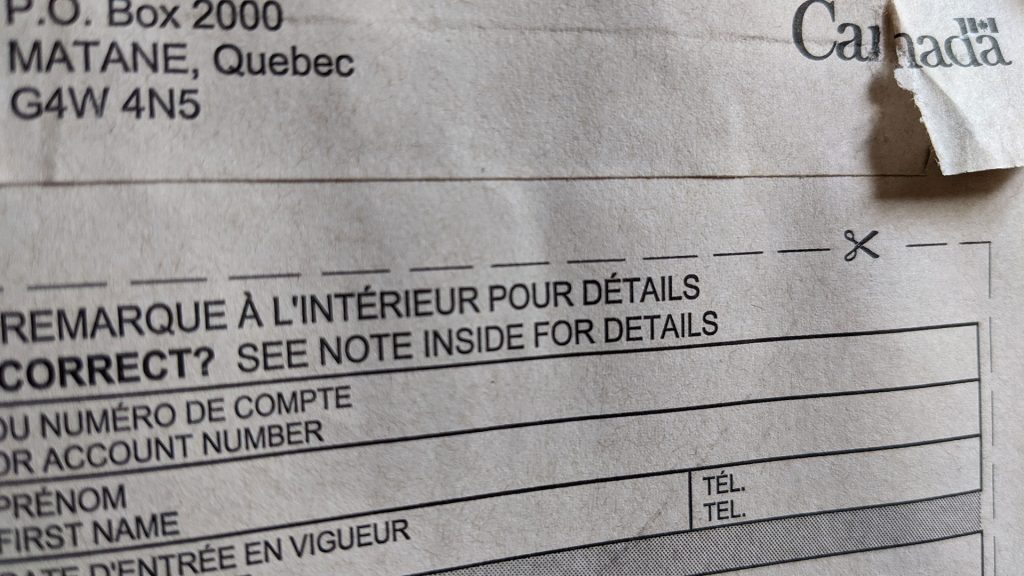
According to government data, 441,599 aid recipients who in late 2020, received a letter from the Canada Revenue Agency questioning their eligibility and warning they may owe back some of the payments.
Vivian Ketchum applied for emergency aid during the first wave of the pandemic when she was forced to isolate after being close contact with someone who tested positive for COVID-19.
As someone who is already in a financially precarious spot, Ketchum found taking time off from her low-paying job and doing phone surveys completely devastated her situation.
The 57-year-old residential school survivor thought the Canada Emergency Response Benefit (CERB) could be her financial life raft.
“I thought the federal government was being gracious in giving out the CERB,” she said in a recent interview from her Winnipeg apartment. “But they are unforgiving and relentless in wanting that money back.”
Ketchum was one of 441,599 aid recipients who in late 2020 received a letter from the Canada Revenue Agency questioning their eligibility and warning they may owe back some of the payments.
Number-crunching by The Canadian Press about where the letters went suggests a disproportionate number landed in postal codes home to First Nations, including in Manitoba and Saskatchewan.
Two areas of northern Manitoba stand out from the data, with more than half the average number of CERB recipients during each of the benefits’ pay periods receiving what the CRA called “educational letters.”
The forward sortation areas, meaning the first three digits of a postal code, are home to two of the largest Indigenous communities in the province. The local MP notes there are also high rates of poverty.
Data from the CRA show the average personal income in the R0B postal code is just over $11,900, below the national average of just over $51,000.
Nearly 5,000 of the letters landed in this area.
New Democrat Niki Ashton, who represents the region in the House of Commons, said her office has received calls from residents worried about having to repay the CERB.
“This whole issue has caused a lot of anxiety and worry for people in our communities,” Ashton said. “But it really speaks to the lack of, well, frankly, the lack of fairness from the federal government that is extending significant resources and tracking folks down in one of the poorest parts of Canada.”
Areas with large numbers of CERB recipients, including in and around the Greater Toronto Area, showed smaller shares of letters in the data obtained by The Canadian Press under the Access to Information Act.
The CRA said no one has been forced to repay any of the aid, no repayment deadlines have been set and “no recovery or collection efforts have been made with respect to any group, including Indigenous applicants.”
That could soon change. Work is moving ahead this year to verify CERB recipients’ eligibility as the government always promised would happen, with efforts continuing over the next few years. Thousands more letters have also been sent to recipients of the now-defunct program.
Just under 8.9 million Canadians used the $500-a-week emergency benefit the government set up quickly at the onset of the pandemic as millions of workers saw their incomes slashed.
Eligibility rules were ultimately set to require someone to have earned at least $5,000 in the 12 months prior to applying, something the government noted became easier to verify once tax filings rolled in.
Part of the issue with letters going to Indigenous communities is that tax filing rates are lower among Indigenous families.
The CRA’s website encourages Indigenous aid recipients to file their 2019 and 2020 tax returns as a way of proving eligibility, even though the deadlines for those have long passed.
The agency suggested another issue could be that some applicants have tax-exempt income because it is earned on-reserve under a specific section of the Indian Act.
“If an individual had tax-exempt employment or self-employment income, it’s possible that the CRA did not have the necessary income information on file to confirm their eligibility for the CERB,” the agency said in response to questions from The Canadian Press.
The agency added that it has an email for specific questions about COVID-19 workplace restrictions and the impact on Indigenous income-tax exemption.
Ketchum struggled to understand the CRA website and what, if any, options for leniency there were. She asked a tax preparer for help but was told she would have to pay back the money.
Indigenous workers who met the CERB’s earnings requirement were more likely than their non-Indigenous counterparts to receive the CERB, according to Statistics Canada research.
Among First Nations workers, the rate was 41.5 per cent, for Inuit 40.3 per cent, and 36.2 per cent for Metis. The corresponding percentage for non-Indigenous workers was 33.9 per cent.
The reason they were more likely to receive CERB had to do with their disproportionate ranks in low-wage jobs that were hit hardest during the pandemic amid rounds of lockdowns and cuts in hours, and which still have not rebounded to pre-pandemic levels despite the top-line figures.
Ketchum shakes her head at the situation. She relies on getting money back during tax season to help pay her bills, but instead sold her condominium and took out $4,000 in risky payday loans to survive the pandemic.
She said she can barely afford to eat and can’t afford needed dental work.
“CRA took my teeth, my rent, my food,” Ketchum said.









